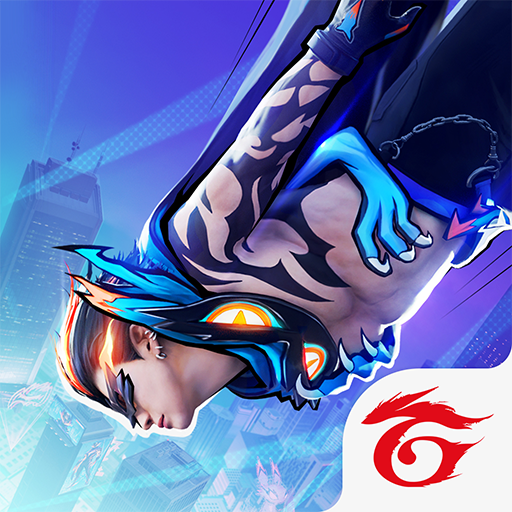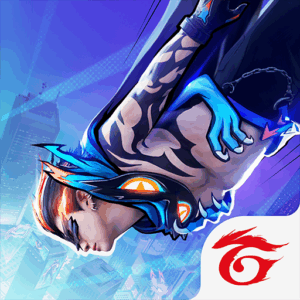
Garena Free Fire: A Battle Royale Phenomenon

| App Name | Free Fire |
|---|---|
| Latest Version | 1.109.1 |
| Last Updated | 2025-02-26 |
| Publisher | 111dots Studio |
| Requirements | Android 5.1+ (Lollipop) |
| Category | Action |
| Size | 341MB |
| Google Playstore | com.dts.freefireth |

| App Name | Free Fire |
|---|---|
| Latest Version | 1.109.1 |
| Last Updated | 2025-02-26 |
| Publisher | 111dots Studio |
| Requirements | Android 5.1+ (Lollipop) |
| Category | Action |
| Size | 341MB |
| Google Playstore | com.dts.freefireth |
In the competitive world of mobile gaming, Garena Free Fire has emerged as a titan, captivating millions with its fast-paced battle royale gameplay. Launched in 2017 by Garena, a Singapore-based company, Free Fire has become a global sensation, particularly in regions like Southeast Asia, Latin America, and India. With over 1 billion downloads by 2021, it’s one of the most popular mobile games ever. This article delves into the origins of Free Fire, its gameplay mechanics, its cultural and economic impact, and the challenges it faces in a dynamic gaming landscape.
Garena Free Fire, often simply called Free Fire, was developed by 111 Dots Studio and published by Garena. Released on August 23, 2017, for iOS and Android, it was designed to deliver a battle royale experience optimized for mobile devices, particularly low-end smartphones. This focus on accessibility set it apart from competitors like PUBG Mobile and Fortnite, which require more powerful hardware.
The game drew inspiration from the battle royale genre popularized by PlayerUnknown’s Battlegrounds (PUBG). However, Free Fire distinguished itself with shorter matches, simpler graphics, and a smaller file size, making it ideal for players in developing countries with limited internet access or budget devices. Garena’s expertise in Southeast Asia’s gaming market helped tailor Free Fire to regional preferences, contributing to its rapid rise.
By 2019, Free Fire was the most downloaded mobile game globally, and in 2020, it generated over $2 billion in revenue. Its free-to-play model, supported by in-game purchases for skins, characters, and battle passes, made it accessible while highly profitable.

Free Fire is a battle royale game where up to 50 players parachute onto a map, scavenge for weapons and resources, and fight to be the last one standing. Matches typically last 10–15 minutes, shorter than many competitors, catering to players seeking quick, intense sessions.
Free Fire’s controls are optimized for touchscreens, with customizable layouts, auto-aim features, and support for gyroscopic aiming. Its low system requirements ensure smooth performance on budget devices, broadening its appeal.
Free Fire’s meteoric rise has left a profound mark on gaming culture, particularly in emerging markets. Its accessibility and vibrant community have made it a social and cultural phenomenon.
Free Fire fosters social interaction through its multiplayer focus. Players form squads with friends or strangers, using in-game voice chat to coordinate strategies. In regions like Brazil and Indonesia, it’s common for players to gather in internet cafes or share gameplay clips on platforms like YouTube and TikTok. During the COVID-19 pandemic, Free Fire became a virtual hangout, helping players stay connected during lockdowns.
Free Fire has a robust esports ecosystem, with tournaments like the Free Fire World Series and Free Fire Continental Series offering multi-million-dollar prize pools. Professional players like Thailand’s Nobru and India’s Total Gaming have become celebrities, inspiring millions. The game’s accessibility has also fueled content creation, with streamers and YouTubers amassing huge followings by showcasing tips, tricks, and highlights.
Free Fire has created economic opportunities in regions with high player bases. Esports organizations, gaming cafes, and content creators thrive on the game’s popularity. In India, before its 2022 ban, Free Fire reportedly contributed to the growth of the mobile gaming industry, with players spending millions on in-game purchases. Garena’s revenue model, driven by microtransactions, has made Free Fire a financial juggernaut, supporting jobs in game development and marketing.
Free Fire’s vibrant aesthetics, including colorful skins and dance emotes, have permeated pop culture. Collaborations with brands like BTS, Street Fighter, and McLaren have introduced themed content, blending gaming with entertainment. In-game phrases like “Booyah!” (a victory cry) have become slang in some communities, while character designs inspire fan art and cosplay.
Despite its success, Free Fire has faced significant challenges that have tested its dominance.
In February 2022, India banned Free Fire, citing data privacy concerns due to Garena’s ties to Singapore and potential Chinese affiliations. The ban disrupted millions of players and halted India’s thriving Free Fire esports scene. Garena responded with Free Fire MAX, an enhanced version with improved graphics, but its re-entry into India remains uncertain as of 2025. Similar restrictions in countries like Bangladesh highlight the geopolitical challenges of global gaming.
Free Fire’s addictive gameplay has sparked concerns among parents and governments. Reports of excessive playtime, particularly among youth, have led to calls for gaming restrictions. In response, Garena implemented features like playtime reminders and parental controls, but debates about gaming addiction persist.
Free Fire faces stiff competition from PUBG Mobile, Call of Duty: Mobile, and newer titles like Apex Legends Mobile. While Free Fire’s low system requirements give it an edge, competitors’ superior graphics and larger maps appeal to players with high-end devices. To stay competitive, Free Fire regularly updates its content with new characters, modes, and events.
Cheating, such as aimbots and wallhacks, has plagued Free Fire, frustrating legitimate players. Garena’s anti-cheat systems ban thousands of accounts weekly, but maintaining a fair environment remains a challenge, especially in ranked matches.
As of 2025, Free Fire continues to innovate to retain its massive player base. Garena is exploring augmented reality (AR) integrations and cross-platform play to enhance immersion. The Free Fire MAX version, with upgraded visuals, targets players with better devices, while the original game remains accessible to all.
The esports scene is expected to grow, with plans for more regional tournaments and grassroots events. Garena’s focus on localization—tailoring content to specific regions—will likely strengthen its hold in markets like Latin America and Southeast Asia. Additionally, sustainability initiatives, such as energy-efficient servers, aim to reduce the game’s environmental impact.
Garena Free Fire is a testament to the power of accessible, engaging mobile gaming. Its fast-paced battles, vibrant community, and cultural resonance have made it a global phenomenon, particularly in regions where mobile gaming dominates. While challenges like bans and competition persist, Free Fire’s adaptability and player-centric approach ensure its enduring appeal. As it evolves with new technologies and trends, Free Fire remains a shining example of how games can unite, entertain, and inspire millions across the globe.
Word Count: 998
This article provides a comprehensive overview of Garena Free Fire. Let me know if you’d like any specific additions, such as more details on a particular aspect or a translation into another language!